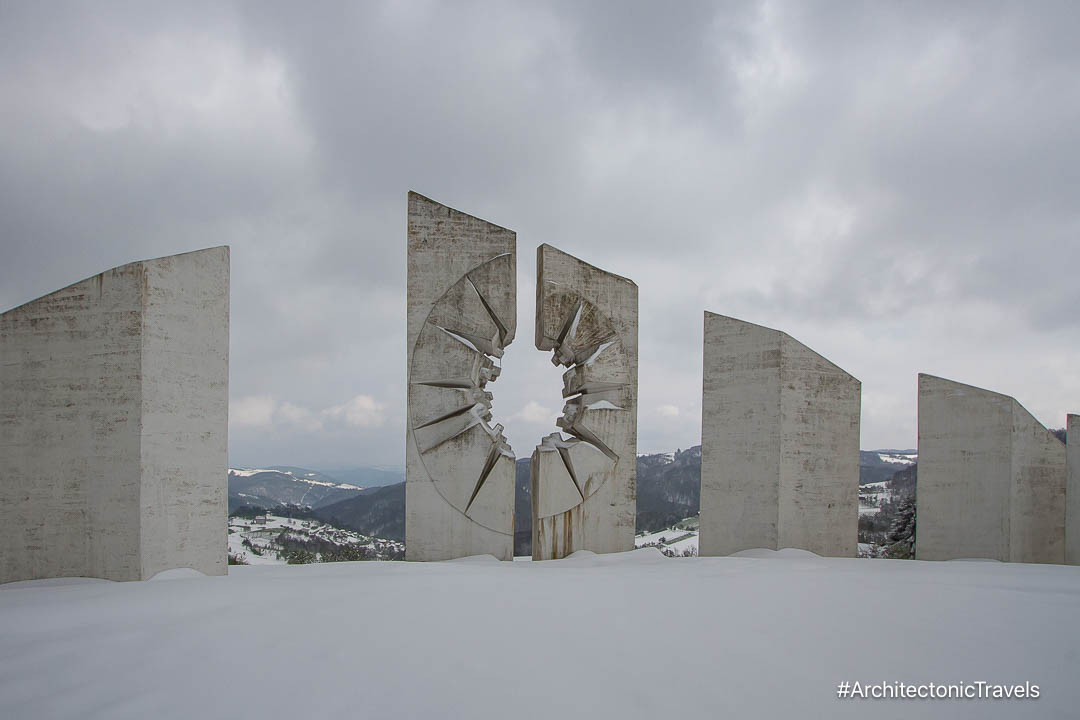Kadinjača Memorial Complex
Location: Užice, Serbia
Completed: 1979
Architect: Miodrag Živković and Aleksandar Đokić
Genre: Spomenik, Socialist memorial, former Yugoslavia
The memorial complex commemorates partisans who fell during the Battle of Kadinjača on 29th November 1941. Užice and the surrounding area was the first region in Europe to be liberated from German occupation during World War II. Yugoslav partisans successfully took the city in the autumn of 1941 and declared the liberated territory the Republic of Užice. During the republic’s 67 days of existence, Užice became a command HQ for the Partisans and their leader, Josip Tito, travelled to the city from his hideout in Belgrade to join the fighters. The inevitable German counterattack was a success and the city was reclaimed but their advancement was dramatically hindered on Kadinjača Mountain, 14kms northwest of Užice, by the bravery of the resistance fighters who numbered approximately 400 against the Wehrmacht’s superior force of 3,000-plus men. Practically all partisans from the Worker’s Battalion lost their lives during the battle but their almost 6-hour stand against the Germans on the mountain provided enough time for both civilians and the Partisan leadership, including Tito, to safely get away from Užice.
A modest pyramid-shaped memorial was erected on the mountain in 1952 and a more extensive complex was added between 1977 and 1979, which incorporated the original 1952 memorial.
Did you know?… We also have an Instagram account and Facebook page that are dedicated to all things Architectonic. Join our community for daily photos of Brutalist architecture, Soviet memorials, abandoned buildings, classic modernism and gargantuan monuments. Just click on the links below.
Stay Posted
Subscribe to our newsletter to receive our latest architecture posts as well as our latest news from the road less travelled...

